“Too Many Cooks:” an analysis
If you have access to the internet, and I think it’s safe to assume you do, chances are you’re already familiar with “Too Many Cooks,” Caspar Kelly’s surreal, head-spinning take on the tropes of television. This 11-minute short, produced for Adult Swim, goes so far beyond simple labels like “parody” and “satire” that it warrants some special consideration. Once you’ve seen a form-shattering piece like this, you start to ask “Why aren’t more things like this?” All the year’s best movies — The Grand Budapest Hotel, Guardians of the Galaxy and Birdman, for starters — bend the shapes of their forms, but “Too Many Cooks” rips its form to shreds, then crams it into a Cuisinart. Hit the jump to begin your journey into madness.
For the first minute, “Too Many Cooks” isn’t even satire, it’s a straightforward title sequence for an imaginary 1980s sitcom, along the lines of The Brady Bunch, Eight is Enough, Full House, Family Matters, Family Ties, Too Close For Comfort and many others. We meet Dad, who’s some sort of lovable-doofus stay-at-home graphic designer or something, Mom, who has burned the cookies, a tween daughter, who bops to music on her earbuds, a tween son, who’s a little pudgy but lifting weights, a bespectacled brainiac younger daughter, a grandma and a baby, an older, sexier cousin or neighbor or something, and — and this is the first indication that something is amiss — another baby.
This, it seems, is the Cook family, nine (or so) characters, not even that large a group by American sitcom standards. The title song, which is pitch-perfect homage, bounces along with its white-R&B flourishes, trite and sugary and utterly inoffensive. We see images of family joy and mishap: the girls sing in Ray Charles shades, the family fails to move the couch, mom and dad kiss, dad tries to take a family portrait and fails.
Not only is this first minute not satire, it’s not even remarkable. Typical of the shows it’s imitating, the characters in “Too Many Cooks” are introduced with the yellow title underneath each actor’s face (the names, if you’re curious, are the actual actors’ names) which forces each character into a kind of embarrassed acknowledgement of the camera’s attention. This is a kind of white, middle-class American noblesse oblige — no one is proud, exactly, to be caught on camera, but they’re willing to grin and bear it. The purpose of a device like this — the actors looking into the camera during an intro — is to invite the viewer into the show’s world. How can we look away when the characters have already acknowledged that they can see us? Not only can they see us, but they are humbled by our presence? It’s not a mere curtain call, where the actors face the camera as though to present a portrait of their characters; we’ve snuck up on them, and while they’re surprised to see us, they’re glad we’re here and chagrined that we didn’t catch them at a more heroic moment. In this way, the “sitcom family” — an entity engineered and manufactured by a huge television network — humbly begs our pardon for not being better prepared for our arrival. The tiny scenarios presented — the burnt cookies, the lost keys, the dropped couch — all speak to the slog and meandering chaos of middle-class American family life, a life which, when painted darkly, is about life’s energy draining while one is mired in the stew (or broth, if you like) of everyday trivialities.
Then, just as you think the titles are ending and the show is to begin, the titles continue, and more characters suddenly start piling in. Now, suddenly, there is a girl-jock daughter in her baseball clothes, a brainiac son with test-tubes and goggles, a bully son giving noogies, a “cool next-door neighbor” boy, another baby, a set of pre-school twins, a grandmother almost identical to the first grandmother, a second mother, an organ-playing puppet cat named Smarf, and then, oddest of all, a series of four literal cooks, all preparing food in a completely different kitchen from the one we’ve seen.
This last choice is so bizarre and unexpected — the show, apparently, literally has “too many cooks,” an unforgivable pun on top of an unforgivable theme song — that it’s easy to overlook the strange stocky, bearded man who appears in the shot behind the fourth cook. This character, it turns out, is identified as “Bill” by the IMDb, and is the secret protagonist of the piece.
UPDATE: Sharp-eyed reader Thomas has noticed that Bill actually shows up much earlier, looming behind the brainiac young daughter Cook, and then, later, stalking the baby.)
(It’s also worth pointing out that this second iteration of the sequence introduces a subtle stylistic wrinkle. While the characters the first time around paused what they were doing to acknowledge us, the characters this time around are halted by freeze-frames, as though the image must come to a halt before the characters can escape their embarrassing situation.)
When the second iteration continues past the “too many cooks” joke, the “middle-class family” moments become more outre. A teenage son climbs up a ladder to peep at the teenage daughter undressing (he uses binoculars, even though he’s mere feet from her). Even though we have caught them in something more than an embarrassing situation, their reactions are the same as though we had happened upon them listening to music or lifting weights — a shrug and an embarrassed grin. The second iteration of the theme is stranger than the first by many degrees, but the characters’ reactions are the same; the “rules” of middle-class sitcom behavior remain in place. Smile, humble yourself, be goofy, and people will watch your show. (The teenage daughter, the one who is being peeped at, even loses the sweater she was using to cover herself during her castmate’s freeze-frame, the definition of “being a trooper.”
Even though the second iteration has already introduced a “new mom,” it hasn’t quite sunk in that we’re talking about a whole different family here. But now, we have a new dad, this one the opposite of the stay-at-home graphic designer. This dad is a corporate wage slave, 50% shlumpier than the first dad, and we find him at work being literally dumped on by “Steve from Corporate.”
And look, there’s Bill again, in the office now! And the hidden narrative of “Too Many Cooks” starts to reveal itself. “Too Many Cooks” is about Bill’s efforts to infiltrate — and, eventually, dominate — the world of the Cook family, which, we will see, encompasses all of television. It seems Bill was unable to intrude into the stable, “normal” world of Too Many Cooks in its first iteration, but now that the show has expanded, he’s able to gain a foothold. (UPDATE: See above for Bill’s efforts to invade the world of the Cooks; he’s already in the house, threatening the children in the first iteration.)
The world of this second dad is brutal and unpleasant — his boss is an ass and there’s a snoopy secretary — but everyone is still happy to see the camera intrude.
For a moment, we think maybe this second family is from a completely different show, but then we see the “bully son” set a fire in the kitchen, and “first dad” comes in to put out the flames. So they’re all, improbably, living in the same house together. The shlub father, the oppressive office environment, the voyeurism, the pyromania — this vision of family life is quite a bit more unpleasant than the first go-around. Next, we see the teenage daughter playing Pictionary with the family, still topless, trying to communicate the idea of “peacock feathers.” (I don’t want to press too heavy for symbolism in a short that’s already a riot of symbols, but “peacock feathers” are, in addition to being NBC’s corporate logo, a symbol of pride, the sort that goeth before a fall: the Cook family, it seems, in spite of their embarrassment, is headed for quite a fall indeed.)
Next, we see “second dad” and “second mom” kissing with “first dad” and “first mom.” So the Cooks have, in the space of two minutes, suddenly gone from “traditional American family” to “bizarre foursome-led family of peeping toms, puppet-cats, budding arsonists and nudists.”
Then comes the third iteration of the theme, presenting a bewildering new set of Cooks: yet another mom, an entire middle-class African-American family, a male stripper and a lady cop. This time, the family expands and morphs literally before our eyes; as the camera pans around the dining-room table, the family members change in turn. This time, no one acknowledges the camera or freezes, as though the Cooks, while still cliched idiots, no longer feel the need to appeal to the viewer.
Having now expanded and folded in on itself, “Too Many Cooks” takes its concept to the next level: it expands into other genres. In its fourth iteration, it’s suddenly now a cop show, with a mismatched cop-buddy team, both named Cook, cleaning up the mean streets of the city. The theme song shifts tone lyrically but not tonally, it still burbles happily along as it expands to include the antics of protecting the city. We see the lady cop take down a stereotypical TV mugger, and he gets his own grinning freeze-frame, reminding us that, even though the context has changed, the rules of the show have not: a character, even a criminal, should still be happy to see the viewer catch him at his most embarrassing moment. (IMDb identifies the criminal as “D.C. ‘Fingers’ Cook,” indicating that the lady cap has actually just arrested a member of her own family. The Cook family, it seems, is large enough to include both lawmen and rule-breakers, and they police their own.)
Police-drama cliches pile on: the chief of detectives yells and thumps his desk, the promising young cop aces his test (while Bill lurks in the background). Then, not content to proceed as mere parody, the police-drama also folds in on itself, bringing in a coat and a pie (played by Lars von Trier, which, the IMDb informs us, is “credit only”) as inanimate members of the increasingly-expanding Cook family.
Abruptly, the fifth iteration of the theme changes genres to an ’80s-style G.I. Joe parody, as the Cooks suddenly become something less benign than a middle-class family and something more forceful than beat cops: they become a team of globe-trotting do-gooders, encompassing all races, including a lizard-man with a jet-pack, kicking ass for America. “Too many cooks will serve a helping of freedom” crows the now 80s-dance-sounding theme, as the Cooks trash masked foreigners in a desert land. Again, I don’t want to lean too heavily on symbols, but the Cooks, in their representation of American television tropes, seem to become less humble and more hubristic as they expand, and the desert wastes of the fifth iteration implies an American imperialism far past its mandate to entertain. As though to signal this crossing of borders, as it were, an animated Bill suddenly takes center stage at the end of the fifth iteration, chasing the Cooks across the desert with his cartoon machete.
Just when “Too Many Cooks” could not get any stranger, it gets stranger. As the theme shifts into a sweeping orchestral score, the sixth iteration of the theme presents the show as a Dynasty/Falcon Crest-style family saga, but before it does so, it presents the same two shots of its opening four times, which is one of the ballsiest stylistic devices I’ve ever seen anywhere, much less in a comedy short. It throws the viewer off completely, and in a short where the rules have already been bent, broken and twisted into a pretzel, it leaves you unprepared for the big shift that’s about to come.
Now that the Cooks are wealthy landowners, Bill finally emerges fully as the short’s hidden protagonist. He begins to kill the Cooks one by one as they are introduced, sometimes unceremoniously, sometimes gleefully. The Cooks’ hubris has, seemingly, allowed Bill into their world.
Where did Bill come from? It’s hard to say, but the seventh iteration provides some clues. The bouncing theme returns, but suddenly we’re not watching a sitcom anymore, or even a TV show. We’re watching a low-budget ’80s slasher movie, complete with film scratches and a POV shot looking into the girls’ dorm windows. Soon we see Bill murdering a woman in a basement corridor, and another woman in a dorm kitchen. But is this where Bill is from, an ’80s slasher movie? I’m going to argue no: ’80s slashers were always masked, and always had much more style than Bill, who dispatches his Cooks with human-scale violence, tussling and wrangling with them.
The sudden shift from TV to film is more disorienting than ever; the theme plays, but we’re not watching any kind of TV show anymore, ’80s or otherwise, and the brutality shown in this section makes for a deeply disjunctive viewing experience: literally, what are we watching? Bill is a serial killer, but he’s not from a serial-killer movie. Where, then, did he come from?
At the precise moment we start to lose faith in the direction of the piece, here we are again, suddenly back in the Too Many Cooks world, as Katie Adkins as “Samantha Cook” poses (and freeze-frames) for us while brushing her hair. We breathe a sigh of relief as we think the world has returned to “normal,” that perhaps the slasher-movie sequence was a nightmare we’re now waking from. But then Bill appears again, now taking advantage of the freeze-frame to attack Katie while she’s frozen. (In the sixth iteration, Bill attacked but froze when needed; as he becomes more powerful, he is no longer bound by the rules of the world.)
Terrified to the point of not being able to obey the rules, Katie Adkins, amazingly, breaks free from her freeze-frame and flees the set as Bill chases her. Subversive comedy has broken the fourth wall many times, but what happens in “Too Many Cooks” goes so far beyond that. As Bill chases Katie through the studio where the show is shot, we see other characters standing still, frozen in their freeze-frames, helpless to act. To make things more disconcerting, all the characters carry their titles in front of them wherever they are. I could analyze this in terms of characters being unable to escape their identities, but I think it’s just more of a brilliant visual gag, that the rules of this sitcom universe are so iron-clad that even when you are being chased by a crazed lunatic, you must still “carry your badge,” so to speak, while the murderer is able to roam the world without name.
Literally! For when Bill is finally given his own title card, the title refuses to resolve, refuses to identify him. This says to me that Bill isn’t of this TV world at all. Rather, Bill is a real killer, one with some kind of ability to infiltrate a fictional TV world, where he is free to indulge his taste for human flesh.
After Bill dispatches Katie Adkins, the tone abruptly changes again. In the eighth iteration of the theme, suddenly the Cook family (still in their suburban home) has at least two superheroes in it. Or so it seems. Because “Too Many Cooks,” as we’ve seen, is not content to parody genres, it seeks to shatter them. So when one of the Cook daughters twirls in the dining room “to become a superhero” in the style of Linda Carter’s Wonder Woman, she twirls, becomes a superhero, then keeps twirling until she becomes normal again, then keeps on twirling. She transforms five times before she stops twirling. “To become a superhero,” it seems, is not even her goal, merely to twirl in and out of superheroism. This is a joke so sublime I don’t even know how to characterize it. Then, once she has stopped twirling, Bill immediately splits her head with his machete. In the kitchen, Peeping Tom Cook hears her murder and also starts to twirl to turn into a superhero, but only gets halfway into one transformation before Bill beheads him, and the character must freeze-frame in mid-death transformation, split into two separate beings.
This is, incredibly, an even better joke than the previous one: it’s one thing for Katie Adkins to be trapped by the rules of of title-presentation, but now here’s this poor guy having his live end, and freeze, twice, in cheap video transformation.
In a brief, ninth iteration, Too Many Cooks becomes a Law & Order-style detective drama. A detective (Det W.J. Cookowski) examines the body of the twirling superhero Cook and is quickly dispatched by Bill, who then completely takes over the proceedings. The original theme song returns, but in the tenth iteration Bill now plays every part on the show — bopping girl, peeping tom, topless teen — while other family-members bodies lie rotting in pieces around the house.
This is Bill’s apotheosis, his goal from the beginning: to wipe out the Cooks and take over their show. Like John Doe in Seven, Bill envies the middle-class drudgery of the Cook family, envies and despises it, and, as the tenth iteration winds to a close, we see him literally feasting on the characters’ bodies, drenched in blood.
Just when we think the concept cannot go any further, Bill is destroyed by Smarf, who is revealed to be a Terminator-style robot that can shoot lasers out of his eyes. For a brief moment, we think “Well, that’s it, Bill is dead, there is nothing left to do,” but “Too Many Cooks” suddenly shifts into yet another gear, and for its eleventh iteration becomes a Battlestar Galactica-style space opera. For a brief moment we think that the Cooks, and television, has escaped Bill’s clutches, but now we find that Bill cannot be destroyed. He continues to infiltrate the world of the sci-fi drama, being cloned, appearing as an alien, his head now gigantic as it shoots lasers out of his mouth. By striking Bill down, it seems Smarf has made him more powerful than he could possibly have imagined.
Now that Bill has broken out into infinity, the short folds back on itself once again, leaving the world of television altogether, leaving even the studio, and entering the “real world.” It’s tempting to say that the interlude following the eleventh iteration is a medical drama, but it’s clearly not: the hospital where we find the original Cook paterfamilias wasting away looks like no medical-drama set ever (and even less like a real hospital, which may be the point — if it looked like a real hospital, we would suspect we were in yet another show). Dad Darren Cook, now deathly pale, lies trapped under his caption in bed, stuck, even in “real life” with his freeze-frame caption. Just as Bill infiltrated the TV world from wherever he came from, now TV infiltrates our own world, as the doctor examining Darren becomes infected with “intronitus,” ie, an infection of the intro. As the doctor’s credit creeps up his back, he moans for the nurse to kill him as he struggles to keep himself from looking at the camera and smiling, but the rules of the intro are strict, and can only be disobeyed by the triumphant serial-killer Bill.
Reality shattered, for its twelfth iteration the song returns once again to normal, but the show short-circuits. Characters now run backwards, glitch in and out of scenes, switch places in familiar scenes and morph into Manimal.
Finally, the thirteenth iteration presents a world turned upside down, where the titles themselves become the characters, and the characters become the titles, screaming in agony to find themselves in this new perverted reality. What started as a simple visual gag is now a surreal horror, as text becomes character and character text.
This is as far as the gag can go, and as the nightmare fades, we find Smarf, stabbed and spurting blood from his carotid (if puppet cats can be said to have a carotid) drags himself across the kitchen floor to hit what looks to be some kind of “kill switch.” This switch, it seems, pulls the plug on the whole show, the whole reality of Too Many Cooks. Bill has completely broken the universe, and there is no hope for sanity any longer. With his dying breath, Smarf ends the entire world. (As my 11-year-old daughter put it, “Smarf knew what was up.”)
In an epilogue, Smarf finds himself in a kind of sitcom heaven, where he is in his Brady-Bunch-style “box,” along with all the myriad members of his television clan, all still waiting for Darren Cook to take their family portrait. It would be touching and even sentimental, except that, as the intro fades, we see that Darren is no longer Darren, but Bill.
Bill, it seems, has not only infiltrated television, and broken it, but he has infiltrated Heaven as well. The Cooks can never be safe from him, and, in the short’s chilling final image, we feel like we can never be safe either.
Almost as an afterthought, the show Too Many Cooks now begins, then ends as soon as it does. “To Be Continued,” a title promises, as the credits race by at a ridiculous speed. What this hellscape show could possibly deliver is difficult to comprehend, but “Too Many Cooks” has already exceeded beyond the boundaries of every aspect of television possible.
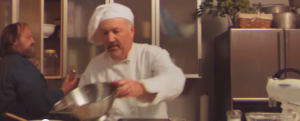
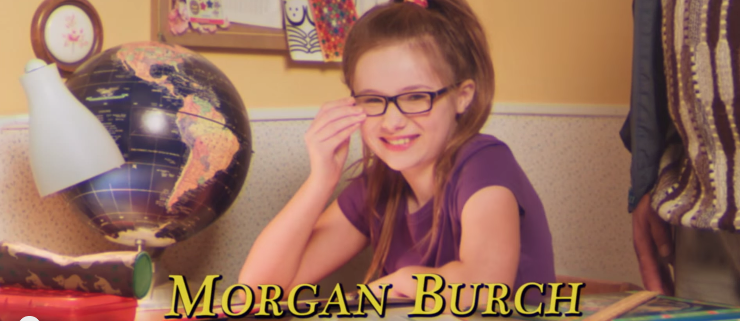
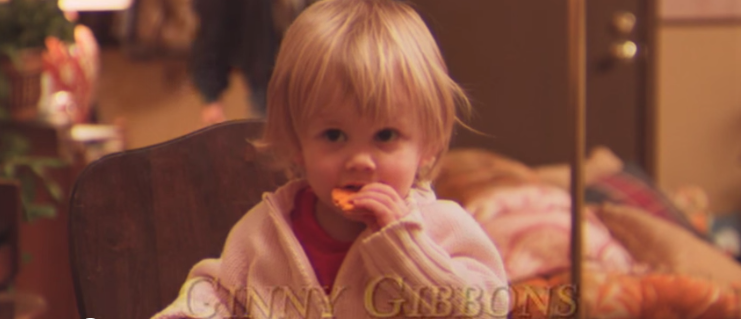
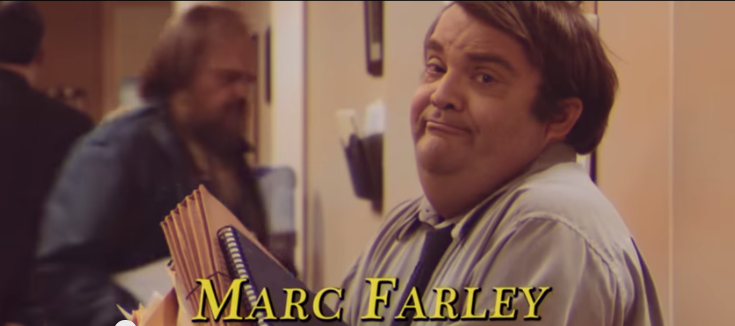
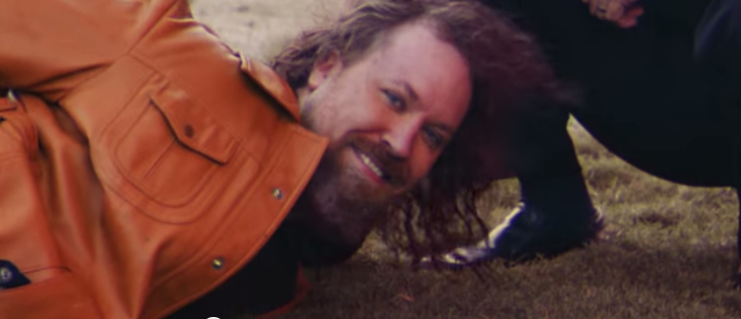
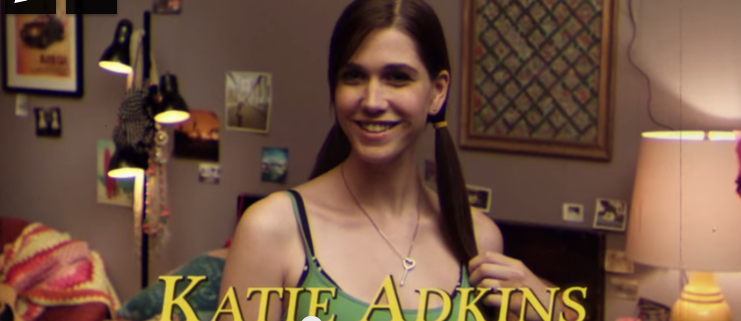
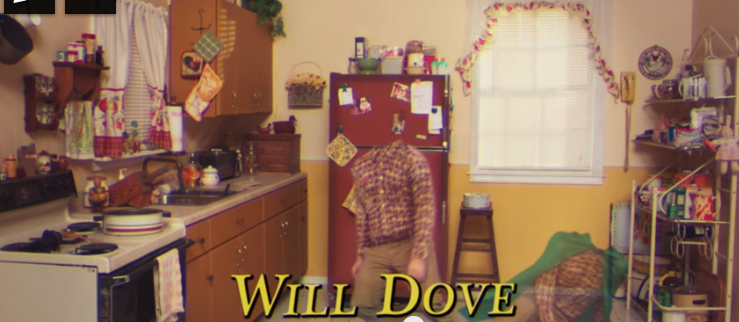
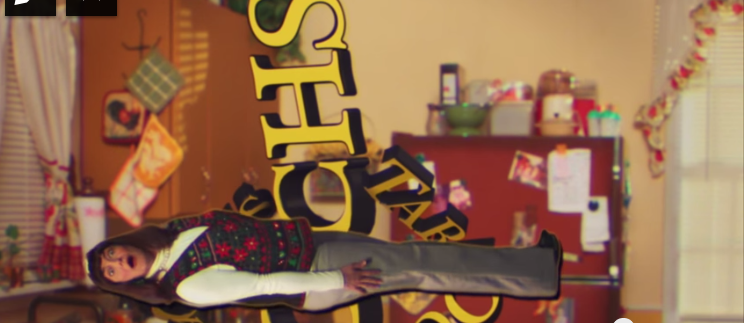
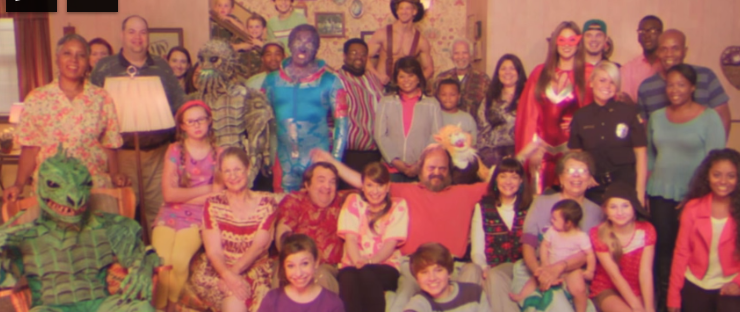
Awesome. I’d put off watching this until now. I’m glad I did–and I would have stopped half way through if not for your write up (I watched the whole thing before the write-up).
I assumed that maybe the different shifts were different -seasons- and we were watching a mashup of the show as it transformed from a family drama to more of a black (but still made for white people) sit-com–to a cop show spinoff, etc.
I think your take is right though although, I’m not sure Bill’s final landing is, in fact, horror: I think that by killing everyone he may, instead, have freed them from the horror of eternal intro–gotten them to the more let-your-hair-down, stop being slaved-to-the-camera show-universe. After, all, he looks kind of like Comic Book Guy–someone who memorized every line of the show … but hated it.
I think this piece might be a good model for “description” (and “analysis,” too, come to think of it) in a writing course.
Great analysis, just to note Bill appears in the first iteration – he’s standing beside Morgan Burch.
OH JESUS HE’S ON THE STAIRS!
HE’S BEHIND THE BABY!
(I thought he was behind the door but he wasn’t)
Actually – as horror it’s reminded me of Neonomicon by Alan Moore (and this video analysis https://www.youtube.com/watch?v=9gCH7e0r70U )
I was going to post this.
There he was all along. Trying desperately to be part of this normal family, but they literally turned their back on him. He sat on the stairs, behind the figurative jailhouse bars, alone and lonely. Their rejection of him triggered something in him… transformed him into Bill.
Bill’s omnipresence forces the view to ask “who are the Bills in our life? Who are we turning out back on, possibly sparking in them an insatiable carnal blood feast?”
The last shot, where Bill’s face appears in place of Darren Cook’s, reminded me of Jack Nicholson’s leer at the end of The Shining, where he is immortalized into the picture of the 1920s ballroom party.
That certainly seems implied, er, “Bill.”
Yep, that has to be referring to The Shining.
what.
the.
. . . .
I thought maybe I shouldn’t read your post before watching the video, but having read, then watched, holy hell I’m glad I did, because I probably would have just hit “pause” and come back to your comments in hope of making some semblance of sense out of what I was looking at. I . . . I don’t even. Words. They fail me.
Notice how the theme music follows (or is generated by) Bill as he runs after Katie Adkins. Thoughts?
I’m not sure that the music follows Bill around, or is just localized to the set. I’m unclear on that aspect. It’s an interesting point though.
Nice analysis, I really enjoyed the read. I had an alternative take on the ending, though. I believe Smarf dies before pushing the button. That interpretation wouldn’t change too much for your analysis – the sitcom heaven would become a sitcom hell and it makes sense that Bill would get to sit on the throne of such a place.
I think one thing in your analysis is slightly off. I’m pretty sure Snarf doesn’t actually press the Kill Switch button, but gets oh so close before kicking the bucket. To me that’s a tragic moment, like if he were to push the button all this horror could somehow go away or be reversed, but instead he bleeds out and falls short and therefore they’re all doomed to be trapped in the show forever. One question I have is: how did Snarf get injured in the first place? Or for that matter how did he return to his original form after transforming into Robot Snarf?
Good piece. I would nitpick one point: everyone keeps comparing the sci-fi sequence to Battlestar Galactica, but it’s much more reminiscent of the shows Buck Rogers and Space 1999.
I could take a shit and put abunch of random names and situations that we’re all familiar with and it’d still be the same/if not better then Too Many Cooks.
Move along folks, your over analyzing nothing and looking the fool.
Until then we will all have to settle with your ability to barely compose two sentences. Life is truly unfair!
The scene where dying Snarf pushes the red button seems like it might be a reference to the final scene of Beneath the Planet of the Apes, where Charlton Heston ends the world: https://www.youtube.com/watch?v=tQVxMtcXAhA
See now the final scene with Smarf to me screamed “Mathazar, Activate the Omega 13”, enacting a jump into the past to put things back on the rails.
My first thought was a Firefly homage.
“Out of Gas” has a wounded Mal staggering across the ship, trying to reach the Big Red Button that will signal the crew to come back. He collapses, and we don’t know if he actually reached the button, or if the crew returned on their own. (And given all the flashbacks and time skips in the episode, the scene ends with Mal about to sleep, asking if they will still be there after he wakes up.)
I thought, when it shifts to what becomes the 80s slasher film, that it felt like it was trying to become an 80s girls’ school sitcom (like Facts of Life or A Different World) but got derailed.
The third iteration with the table circle is a parody of the opening to Roseanne as well.
Indeed. I was disappointed Roseanne wasn’t mentioned on the list of sitcoms, given the blatant reference.
The entire notion that we try to emulate TV archetypes is beautifully rendered into the scene where the titles become “human” and people become the titles. That scripted characters embody form and we unknowingly become hostage to writers abstractions can be inferred as we see the human titles scream in agony as they are horizontal, stripped-down and devoid of an identity. Here viewers can become witness to the hollowness of the 2 dimensional “text” characters themselves (perhaps a critique to superficial content, and all TV characters in general) and hopefully realize that we have also become hostage to the effects of media should we look for role models on TV (independent from whatever the current trend may be). I think that realizing this aspect for the viewer can be the true horror of Too Many Cooks – The lack of our own individuality, unknowingly subscribing to another identity only later to realize we don’t have our own. The title “Too Many Cooks” in this context makes sense, as we’ve become a uniform product of the mass media. And here’s the punchline: in this context, I’m not surprised about Bill’s mission in the series, they’re just – too many – Cooks around that don’t deserve to exist. Bill restores balance to individuality.
My feeling is that Smarf hit a “reset” switch. One of the rules of classic sitcoms is that by the end of the show, the stasis has to be reset to normal. So that no matter what happens in the show, nothing really ever changes and episodes can be watched in any order. This is the general rule. Obviously sometimes a character leaves the show or a new one joins and things do change permanently, but those are the exceptions. I think Smarf saved everyone by resetting the universe, but that reset also allowed Bill to potentially start his reign of terror again.
Why is everyone saying the snake-man is one of the G.I. Joes? He is one of the Cobra villains, the forces of evil. He’s not one of the heroes. The Cobra Commander eventually mutated into a snake in that series and got the same reptilian skin. The sharp metal teeth on that character also indicate his villainous nature.
“the names […] are the actual actors’ names”: you mean on the 1st opening, right? ‘Cause later we get a Gwydion Lashlee-Walton and I have a hard time buying that. XD
I was gonna warn about “Bill” behind Morgan Burch, hehe, but I didn’t know about him being behind the baby too.
Ooooh, “infection of the intro”… I finally get why it’s called intronitis, thank you.
http://www.imdb.com/name/nm5713425/?ref_=fn_al_nm_1
Lemme repeat the hunch I gave on YouTube: the openings are playing in Ken DeLozier’s intronitis-riddled head and the serial killer is his immune system.